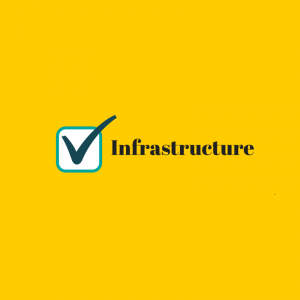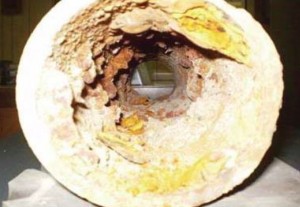State Legislators Come Together to Discuss Infrastructure Issues
December 15th, 2014 | By: Maria Matthews
State legislators and legislative staff from around the country gathered in Washington, DC last week to share innovative solutions to the pressing problems facing states, and infrastructure issues were among the topics they tackled. During National Conference of State Legislatures (NCSL) annual Fall Forum, several sessions focused on infrastructure issues that are facing state policymakers. Department of Transportation Secretary Anthony Foxx told those in attendance that long-term, bipartisan solutions are needed to address the nation’s infrastructure needs. Lawmakers heard from representatives of the National Association of Regulatory and Utility Commissioners about resiliency efforts in the states to protect critical infrastructure during natural disasters. Rep. Linda Harper-Brown of Texas led a discussion on how states can utilize public-private partnerships to finance transportation infrastructure projects by understanding various revenue and financing approaches, and evaluating the policy implications and potential benefits and risks of partnering with the private sector. Another session focused on managing water concerns through hydraulic fracturing. The session educated legislators on how this process works, what chemicals are used and what this means for water quality in the states, as well as what legislatures are doing to protect water quality. NCSL’s National Resources and Infrastructure Committee developed these sessions. The committee is one of nine NCSL Standing Committees that educates Congress and federal agencies about state concerns and serves as a forum for state legislators and legislative staff to learn about and share information regarding programs and initiatives in other states. In particular, this committee has jurisdiction over state and federal energy, environment, agriculture and transportation programs, legislation, regulations and policies. As we have seen in recent years, the lack of action by Congress on infrastructure issues has resulted in the states continuing to take the lead, and meetings hosted by NCSL and the Council of State Governments (CSG) provide valuable venues for state policymakers to exchange information and ideas on these critical issues. ASCE has maintained partnerships with both of these organizations to help serve as a resource for state legislators during these discussions.ASCE Past President Andy Herrmann To Talk Infrastructure with 60 Minutes
November 21st, 2014 | By: Becky Moylan
This Sunday, Nov. 23, ASCE Past President Andrew W. Herrmann, P.E. SECB, F.ASCE, will discuss the state of our nation’s bridges during primetime TV on CBS’ 60 Minutes via a helicopter tour of Pittsburgh. 60 Minutes Video – The roads and bridges Americans drive on every day are in dire need of repair or replacement As the Highway Trust Fund heads once again toward insolvency, 60 Minutes chronicles the need for increased investment across the U.S. with interviews from former Secretary of Transportation Ray LaHood and Rep. Earl Blumenauer. Each with a unique perspective on infrastructure, all these guests will echo the same message: #FixTheTrustFund with a long-term, sustainable funding solution. Host a viewing party, set your DVR, and tell your friends and family to tune in at 7:30 p.m. ET/7 p.m. PT to see ASCE tell the story behind our nation’s bridges.Tags: 60 minutes, bridges, highway trust fund, infrastructure, Report Card for America's Infrastructure, roads
4 Comments »
8 Things Worth Knowing About Montana’s C- Infrastructure
November 19th, 2014 | By: Infrastructure Report Card
Montana’s Water Pipes Could Stretch From Billings to Miami – Roundtrip Montana has approximately 700 public water systems and over 5,300 miles of water distribution and transmission piping, a longer stretch than driving roundtrip from Billings to Miami. Some Pipes Under Original Montana Plots Might Be Original Too Some of the older and more established communities in Montana have pipes that date back to the late 1800s and early 1900s and much of the pipe has never been replaced. It is not uncommon for the pipelines in originally established areas to have clay tile pipe that has cracked or failed. Montana’s Rough Roads Are Rough On Budgets 46% of major roads in Montana are in poor to mediocre condition and 40% of gravel roads are in poor or failed condition. These rough roads cost each Montanan approximately $292 to $484 per year in extra maintenance costs depending on their area’s roads. Montana School Buildings Need Some T.L.C. A bottom-to-top statewide school facilities review revealed that 66% of schools showed signs of damage and wear, as well as environmental needs such as HVAC, roof, and electrical issues. Old Dams Don’t Necessarily Have to Be Inspected The overall condition of Montana’s dams is difficult to track because 75% do not have periodic engineering inspections and are not required to have operation permits. Transit Funding Recently Spiked Several agencies benefited from over $15 million in Federal recovery investments in 2009, which essentially doubled short-term transit funding in the state. Montana’s Trash Ends Up In Less Places Since 1993, significant improvements have occurred within Montana’s solid waste infrastructure and operations, including a reduction from over 300 facilities statewide to just 31. Replacing Montana’s Water and Wastewater Infrastructure Could Cost More than 500 Bobcat Stadiums Current estimates to completely replace Montana’s entire water and wastewater infrastructure are estimated to range between $12 billion and $15 billion, or in other terms, more than 500 Montana State University’s Bobcat Stadiums. Find out more about the inaugural Report Card for Montana’s Infrastructure!Tags: dams, infrastructure, Montana, pipes, report card, schools, water
No Comments »
Election Results Signify Shift in Americans' Willingness to Invest in Infrastructure
November 7th, 2014 | By: Olivia Wolfertz
In light of the recent elections, infrastructure investment has now moved from a topic of discussion into a plan for action in many states. With the nation’s pressing infrastructure needs and limited federal funds available, ASCE is pleased that many states are finding creative ways to pay for infrastructure improvements through other means. With six states successfully passing ballots to fund infrastructure, it’s clear that many Americans are tired of underinvestment and want to see initiatives to improve infrastructure in their communities. In Maryland and Wisconsin, voters approved a transportation “lockbox” to secure funds for infrastructure needs. In Texas, oil and gas taxes will be used as a source for transportation funding. Rhode Island passed an initiative allowing the sale of bonds to fund renovations to mass transit and California passed an initiative that will improve water security for the state. Even in Michigan, where there was no infrastructure-related ballot initiative, Governor Rick Snyder announced his plan to raise at least $1 billion in new revenues for road repairs through fuel taxes and fees before the end of the year. Joseph Kane, a researcher with the Metropolitan Policy Program said, “The public sees the impact of transportation on their lives every day and so the attention this issue is receiving at the ballot box shows their growing awareness of problems.” Though several states are making proactive strides to improve infrastructure through investment, not all states are willing to take these steps. Massachusetts voters repealed gas tax indexing, which would have provided critical funding for transportation in the state. Louisiana also rejected a ballot initiative which would have created an infrastructure bank. ASCE President, Bob Stevens, Ph.D., P.E., said, “By failing to increase revenue or protect funding, these states are continuing with the status-quo, which is unacceptable. Leaders at all levels of government are now tasked with finding solutions to the infrastructure deficit.” Ballot measures to improve state infrastructure are steps in the right direction but are not enough without long-term, sustainable funding at the federal level. Voters demonstrated they want more investment in infrastructure. Now it’s time for Congress to respond to that plea and #FixtheTrustFund.Tags: 2014BallotInitiatives, infrastructure, transportation, water
No Comments »
Big Wins for Infrastructure on Election Day
November 5th, 2014 | By: Maria Matthews
 Leading up to yesterday’s election ASCE brought you information on many statewide ballot measures. ASCE staff worked with our dedicated members on the ground in California, Hawaii, Louisiana, Maryland, Massachusetts, Rhode Island, Texas, and Wisconsin. The issues being put to the test ranged from roads to water and addressed improvements to aging structures, compliance with safety ordinances, or preventing the diversion of dedicated revenue.
Now that ballots have been counted, infrastructure has emerged victorious in six of eight states. California, Hawaii, Maryland, Rhode Island, Texas, and Wisconsin, all overwhelmingly voted to take steps forward in addressing their state’s needs.
A win for infrastructure is a win for the residents and businesses in the state. Whether it’s improvements to the water system, mass transit investment or designating dedicated road funding, everyone benefits from well-maintained infrastructure.
Maryland and Wisconsin voters have successfully prevented their Trust Funds from being raided for general use while Texas established an infrastructure funding that will draw from oil and gas taxes as well as borrow from “rainy day” coffers. Commuting should soon be a bit easier in Rhode Island as a significant investment in mass transit will now be made with the hopes of alleviating congestion and improving accessibility. Investing in improvements to transportation and transit infrastructure benefits both individuals and businesses as it makes travelling safer, moving goods easier, and extends the utility of existing infrastructure.
Hawaii Dam and Reservoir owners will benefit from the ability to request financial assistance as they maintain and repair structures to ensure compliance with Hawaii’s safety standards. Californians can now be better prepared for the extreme drought conditions they’re currently experiencing by investing in projects that will improve water storage and reclamation, and also improve quality and access to clean water in certain parts of the state.
In other states, increasing the investment in infrastructure was unsuccessful. Voters in Louisiana and Massachusetts chose to continue with the status quo; the lack of serious investment in aging infrastructure could end up costing the state and its residents more in the long run. Poor road conditions, like those that exist in Louisiana, are not only costly to repair but, are also burdensome to commuters as it wears on their car. A little bit of investment now could mean a significant amount of savings in the long run. Massachusetts voters opted not to ensure a steady revenue stream for the maintenance of and improvement to state bridges and roads by repealing their gas tax’s link to the consumer price index.
Pass or fail, we hope that Tuesday’s results will bring renewed interest during the 2015 state legislative session in building and maintaining infrastructure systems that reflect the growing needs of residents and its economy. Ideally this momentum will also carry through to our nation’s capital and lead Congress to #FixtheTrustFund and address other sectors of our infrastructure in critical need of attention. Join us on Thursday, November 13, 2014 for a free eLearning Webinar What Civil Engineers Need to Know About 2014 Elections, which will further dive into this topic.
Leading up to yesterday’s election ASCE brought you information on many statewide ballot measures. ASCE staff worked with our dedicated members on the ground in California, Hawaii, Louisiana, Maryland, Massachusetts, Rhode Island, Texas, and Wisconsin. The issues being put to the test ranged from roads to water and addressed improvements to aging structures, compliance with safety ordinances, or preventing the diversion of dedicated revenue.
Now that ballots have been counted, infrastructure has emerged victorious in six of eight states. California, Hawaii, Maryland, Rhode Island, Texas, and Wisconsin, all overwhelmingly voted to take steps forward in addressing their state’s needs.
A win for infrastructure is a win for the residents and businesses in the state. Whether it’s improvements to the water system, mass transit investment or designating dedicated road funding, everyone benefits from well-maintained infrastructure.
Maryland and Wisconsin voters have successfully prevented their Trust Funds from being raided for general use while Texas established an infrastructure funding that will draw from oil and gas taxes as well as borrow from “rainy day” coffers. Commuting should soon be a bit easier in Rhode Island as a significant investment in mass transit will now be made with the hopes of alleviating congestion and improving accessibility. Investing in improvements to transportation and transit infrastructure benefits both individuals and businesses as it makes travelling safer, moving goods easier, and extends the utility of existing infrastructure.
Hawaii Dam and Reservoir owners will benefit from the ability to request financial assistance as they maintain and repair structures to ensure compliance with Hawaii’s safety standards. Californians can now be better prepared for the extreme drought conditions they’re currently experiencing by investing in projects that will improve water storage and reclamation, and also improve quality and access to clean water in certain parts of the state.
In other states, increasing the investment in infrastructure was unsuccessful. Voters in Louisiana and Massachusetts chose to continue with the status quo; the lack of serious investment in aging infrastructure could end up costing the state and its residents more in the long run. Poor road conditions, like those that exist in Louisiana, are not only costly to repair but, are also burdensome to commuters as it wears on their car. A little bit of investment now could mean a significant amount of savings in the long run. Massachusetts voters opted not to ensure a steady revenue stream for the maintenance of and improvement to state bridges and roads by repealing their gas tax’s link to the consumer price index.
Pass or fail, we hope that Tuesday’s results will bring renewed interest during the 2015 state legislative session in building and maintaining infrastructure systems that reflect the growing needs of residents and its economy. Ideally this momentum will also carry through to our nation’s capital and lead Congress to #FixtheTrustFund and address other sectors of our infrastructure in critical need of attention. Join us on Thursday, November 13, 2014 for a free eLearning Webinar What Civil Engineers Need to Know About 2014 Elections, which will further dive into this topic.
Tags: 2014BallotInitiatives, infrastructure, transportation, water
No Comments »
This Week in Infrastructure: Getting Infrastructure Projects Moving Through the Ballot Box
November 1st, 2014 | By: Olivia Wolfertz
With Election Day around the corner, ballot initiatives related to infrastructure will give voters a chance to help shape our nation’s future. The economic, environmental and public safety issues on each state’s ballots underscore ASCE’s strategic initiative: improving our nation’s infrastructure. Infrastructure is the backbone of our economy. The roads and bridges we drive on, the water we drink, the schools we attend and the power systems we rely on are aging badly and in need of repair. ASCE’s 2013 Report Card shows that our nation’s backbone—infrastructure—is in serious need of investment to bring it into good condition. In The Huffington Post blog, Executive Director of the BlueGreen Alliance wrote, “Without a world-class infrastructure, we will not be able to compete in the global marketplace. Resilient infrastructure systems mean we can keep our communities healthy and safe. And, fixing and modernizing these systems is an economic opportunity we cannot afford to pass up.” As this blog illustrates, clearly more advocacy groups realize the domino effect that failing infrastructure has on our nation’s economy and the welfare of all Americans. Without infrastructure in a state of good repair, our nation’s most essential resources are at serious risk. NPR recently exposed how much water is currently being wasted as a result of aging infrastructure. According to NPR, researchers have estimated aging pipes, broken water mains and faulty meters have resulted in enough wasted drinking water to rise 300 feet above Manhattan. And the American Water Works Association added, “nationwide, the amount of water that is lost each year is estimated to top 2 trillion gallons.” According to the Center for Neighborhood Technology (CNT), every year we lose enough water due to aging infrastructure to, “swallow several major American cities whole.” These are startling statistics that cannot be ignored. In light of increased media focus on the state of our nation’s infrastructure and the consequences of continuing to delay much-needed investment, political leaders are speaking out for solutions. In Vice President Joe Biden’s recent speech for increased infrastructure spending, he said that Americans need to, “Build, build, build….we always have to build. That’s who we are.” Biden noted that such building would pay off with jobs and growth in manufacturing. When it comes to our nation’s infrastructure, there is more at stake than detoured commutes and increased traffic. Infrastructure is a vital part of our everyday lives and is the foundation that drives our economy. Election season is a time to not only reflect on its importance but also to make your voices heard at the ballot box to change it for the better.Tags: 2013 Report Card, infrastructure, water, water infrastructure
No Comments »
Rock the Vote for Infrastructure on Nov. 4
October 31st, 2014 | By: Maria Matthews
 Have you ever taken the bus to work? Driven across a bridge? Turned on the faucet for a drink of water? You may have even noticed that some of these roads and bridges are in need of some TLC. Perhaps, you’ve heard news stories about how water becomes scarce at the time of drought, or the opposite, that dams might breech due to epic rains.
If any of this sounds familiar to you, Tuesday’s election is your chance to tackle your local infrastructure challenges head on!
Statewide ballot measures affecting everything from roads and bridges to water infrastructure needs will be put in your hands in at least eight states and many more localities. Here’s a rundown of what you could see in your neck of the woods:
Have you ever taken the bus to work? Driven across a bridge? Turned on the faucet for a drink of water? You may have even noticed that some of these roads and bridges are in need of some TLC. Perhaps, you’ve heard news stories about how water becomes scarce at the time of drought, or the opposite, that dams might breech due to epic rains.
If any of this sounds familiar to you, Tuesday’s election is your chance to tackle your local infrastructure challenges head on!
Statewide ballot measures affecting everything from roads and bridges to water infrastructure needs will be put in your hands in at least eight states and many more localities. Here’s a rundown of what you could see in your neck of the woods:
- California’s Proposition 1 asks voters to authorize the sale of bonds to invest statewide water supply infrastructure improvements. In a time of severe drought California needs you to vote “yes” to improve water storage, water quality, and reclamation.
- Hawaii voters will be asked to authorize “special purpose revenue bonds” to provide public and private dam and reservoir owners with financial assistance to maintain and improve structures. Voting “yes” on Question 4 will make this possible.
- Louisiana needs a “yes” vote on Amendment 4 to authorize the allocation of state funds to an infrastructure bank for eligible transportation projects and prompt the state legislature to take necessary steps toward the Bank’s creation. This is your chance to improve current road conditions and make your daily commute safer!
- Massachusetts needs a “no” vote on Question 1 to maintain the gas tax indexing component of the gas tax increase enacted in 2013. Allow the gas tax to remain linked to the Consumer Price Index and ensure a projected $1 billion of dedicated transportation revenue will be made available over the next decade to modernize roads and bridges.
- Maryland’s Question 1 needs your “yes” vote to ensure that revenue allocated to the Transportation Trust Fund will be used exclusively for the construction and maintenance of highways as well as related transportation purposes.
- Rhode Island’s Question 6 will allow the State to issue bonds and notes to fund enhancements and renovations to mass transit hub infrastructure. Vote “yes” will not only improve access to key transportation sites, healthcare, and other locations but, also stimulate the local economy by creating new jobs.
- Texas needs a “yes” vote on Proposition 1 to have funds from the state’s “rainy day” coffers and a portion of the state’s oil and gas tax revenues allocated to a dedicated fund for transportation projects. This measure creates a dedicated fund for the construction, maintenance, and rehabilitation of Texas’ roadways, and calls for the creation of a commission to identify Texas Department of Transportation savings.
- Wisconsin voters, like Maryland, are faced with a Question 1 that will prevent revenue allocated to the Transportation Trust Fund from being transferred into the state’s general fund. Vote “yes” to ensure transportation revenue earned by the state is used as intended!
- Voters in Humboldt County, California, and a few of its independent cities, will be asked to establish or raise sales taxes for various public works projects.
- In Colorado residents in the Pikes Peak region will be asked to invest in stormwater infrastructure by voting to create and fund the El Paso Regional Drainage Authority.
- The City of Wilmington, North Carolina ballot will ask citizens to approve a 2-cent property tax increase (about $40 per year for a $200,000 home) to improve the utility and safety of roads and sidewalks. Improvements include realigning intersections, adding traffic signals, and crosswalks.
- In Greenville County, South Carolina, ballots will include a 1% “sales and use” tax increase to fund road and bridge improvements as well as crosswalks and pedestrian trails.</span.
Tags: 2014BallotInitiatives, gas tax, infrastructure, water infrastructure
No Comments »
Enhance Rhode Island’s Mass Transit Systems — Vote “Yes” on Question 6
October 29th, 2014 | By: Maria Matthews
 Support improved mobility and a reduction in road congestion by voting to “approve” Question 6 on November 4th.
Rhode Island voters will be asked to invest in transit improvements to make travel, and commuting, easier. Passing this measure will allow the State of Rhode Island to issue bonds and notes to fund enhancements and renovations to mass transit hub infrastructure throughout the State of Rhode Island to improve access to multiple intermodal sites, key transportation, healthcare, and other locations.
This new vision for travel in Rhode Island would benefit not only the system’s current users but also attract a new generation of users who value transportation choice and convenience. Ultimately, reliable transportation and livable, walkable communities are needs that all Rhode Islanders can relate to; our families, our industries, and our economy depend on them. On Tuesday, remember these key facts about Question 6:
✓ It increases the accessibility of transportation, increasing access to health care facilities and other locations.
✓ Improved mass transit will reduce congestion on our roads, making commutes quick and safer
✓ Funding will allow Rhode Island to leverage infrastructure funding from federal and private partners.
✓ Improvement to the transit system will lead to more jobs and economic development.
Rhode Island deserves a 21st Century mass transit system. Create job opportunities and increase economic development by passing Question 6!
Support improved mobility and a reduction in road congestion by voting to “approve” Question 6 on November 4th.
Rhode Island voters will be asked to invest in transit improvements to make travel, and commuting, easier. Passing this measure will allow the State of Rhode Island to issue bonds and notes to fund enhancements and renovations to mass transit hub infrastructure throughout the State of Rhode Island to improve access to multiple intermodal sites, key transportation, healthcare, and other locations.
This new vision for travel in Rhode Island would benefit not only the system’s current users but also attract a new generation of users who value transportation choice and convenience. Ultimately, reliable transportation and livable, walkable communities are needs that all Rhode Islanders can relate to; our families, our industries, and our economy depend on them. On Tuesday, remember these key facts about Question 6:
✓ It increases the accessibility of transportation, increasing access to health care facilities and other locations.
✓ Improved mass transit will reduce congestion on our roads, making commutes quick and safer
✓ Funding will allow Rhode Island to leverage infrastructure funding from federal and private partners.
✓ Improvement to the transit system will lead to more jobs and economic development.
Rhode Island deserves a 21st Century mass transit system. Create job opportunities and increase economic development by passing Question 6!
Tags: 2014BallotInitiatives, infrastructure, surface transportation
No Comments »
Vote “Yes” to Invest in a Louisiana Infrastructure Bank
October 23rd, 2014 | By: Maria Matthews
Amend the Louisiana State Constitution on November 4 to allow the legislature to designate public funds for eligible transportation projects. This is a critical step towards establishing the Louisiana Infrastructure Bank as it creates a mechanism to allocate funds that will provide the state with safer roads and stimulate local economies. A “yes” vote on Amendment 4 will authorize the allocation of state funds to an infrastructure bank for eligible transportation projects and prompt the state legislature to take necessary steps toward the Bank’s creation. Louisiana has a severely underfunded infrastructure which has resulted in deteriorating roads and unsafe driving conditions for its residents. While this amendment would not create the infrastructure bank itself, it is the initial step toward improving road conditions. A vote in support of the infrastructure bank will ensure funds are available to improve road conditions throughout the state. When casting your vote on November 4, remember this: ✓ The current fuel tax is not keeping up with the growing costs of maintaining Louisiana’s roads. ✓ Louisiana needs a dedicated revenue stream to improve current conditions. ✓ The measure will allow the state to fund transportation project without increasing taxes or fees. ✓ Investing in infrastructure projects creates jobs and stimulates the local economy. ASCE supports the creation and operation of a state infrastructure banks. Such a bank would leverage public funds and private dollars to invest in infrastructure – transportation, water resources, environment, energy, telecommunications, and public facilities projects. The Louisiana Section of ASCE is also supportive of Amendment 4. To help Louisiana take a step in the right direction the Section has pledged their support of the “4 for the Roads” campaign. “4 for the Roads” is a movement to educate Louisiana citizens of the importance of passing Constitutional Amendment 4. Organizations driving the campaign include engineering societies, transportation associations and contractor groups. The time is now to establish a funding source to ease traffic congestion and repair the state’s roads and bridges. Vote “yes” on November 4!Tags: 2014BallotInitiatives, infrastructure, transportation
1 Comment »
Vote “For” Question 1!: Protect Maryland’s Transportation Trust Fund
October 23rd, 2014 | By: Maria Matthews
 Wisconsin voters aren’t the only ones who will be asked to decide how the state can spend its transportation dollars. On November 4, Maryland voters will also head to the polls to address this very issue.
Question 1 will appear on the ballot statewide and if passed, will ensure that revenue allocated to the Transportation Trust Fund will be used exclusively for the construction and maintenance of highways as well as related transportation purposes.
The measure offers the strongest possible protection for the Transportation Trust Fund by prohibiting future transfers to the general fund. Up to now, legislative remedies have not been enough to stem the “raiding” of Maryland’s transportation coffers. Only a constitutional amendment can ensure that major funds are available for current and future road and transit improvements.
A vote “for” provides a reliable source of transportation funding without the creation of new taxes, tolls or user fees as it hinders the diversion of Maryland’s transportation funding for non-transportation purposes. When voting, remember this:
Wisconsin voters aren’t the only ones who will be asked to decide how the state can spend its transportation dollars. On November 4, Maryland voters will also head to the polls to address this very issue.
Question 1 will appear on the ballot statewide and if passed, will ensure that revenue allocated to the Transportation Trust Fund will be used exclusively for the construction and maintenance of highways as well as related transportation purposes.
The measure offers the strongest possible protection for the Transportation Trust Fund by prohibiting future transfers to the general fund. Up to now, legislative remedies have not been enough to stem the “raiding” of Maryland’s transportation coffers. Only a constitutional amendment can ensure that major funds are available for current and future road and transit improvements.
A vote “for” provides a reliable source of transportation funding without the creation of new taxes, tolls or user fees as it hinders the diversion of Maryland’s transportation funding for non-transportation purposes. When voting, remember this:
- A “lock box” will be created ensuring funds will only be able to be used for transportation related purposes. The only override is a declared fiscal emergency and a three-fifths vote in both houses.
- You will prevent further raiding of the state’s transportation dollars. Over $1 billion has already been diverted from local transportation projects and never refunded.
- The measure will have no effect on current or future tax rates or spending levels.
- Ensuring funds are available for construction and maintenance of state and local roads will help reduce congestion, improve safety and reliability, create jobs, and boost the state’s economy.
Tags: 2014BallotInitiatives, infrastructure, transportation
1 Comment »



 */ ?>
*/ ?>














